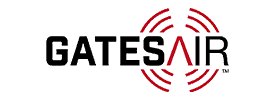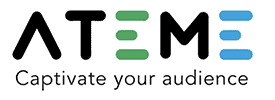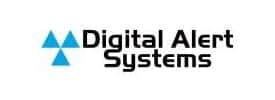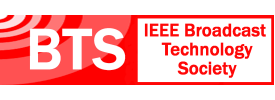- About
- Members
- Sponsors
- Subcommittees
- Technical Documents
- News
- Events
- Spotlight ATSC 3.0
- Contact Us
- Member Login
- Member Meetings
- Advanced Search
Search Site
Member Links
- About
- Members
- Sponsors
- Subcommittees
- Technical Documents
- News
- Events
- Spotlight ATSC 3.0
- Contact Us
- Member Login
- Member Meetings
- Advanced Search
ATSC News
ATSC Highlights at NAB 2015
Posted on May 1, 2015 in ATSC News
More than 50 ATSC members exhibited at the 2015 NAB Show, which brought together more than 100,000 people interested in broadcasting’s future. ATSC 3.0 took center stage at the annual Broadcast Engineering Conference, on the day before the exhibit floor opened. Over the course of three hours, those working to create the standard offered […]
Broadcasting’s Bright Technology Future Rooted in Change, Choices and Principles
Posted on May 1, 2015 in ATSC News
In his opening keynote at the NAB Broadcast Technology Conference on the eve of last month’s NAB Show, ATSC Board Member and National Association of Broadcasters Chief Technology Officer Sam Matheny captivated the audience is his visionary look at the technology challenges and opportunities facing broadcasters today. By SAM MATHENY Today, I want to talk […]
Someone You Should Know
Posted on May 1, 2015 in ATSC News
Dennis Wallace, Meintel, Sgrignoli, & Wallace, LLC Early Years in TV Dennis Wallace is the Managing Partner of Meintel, Sgrignoli, & Wallace, LLC. a consulting firm serving the broadcast, consumer electronics and telecommunications industries. Wallace started his career in television in 1988 as a Chief Engineer, building a new UHF TV station in Indianapolis that today […]
FIRST ATSC 3.0 CANDIDATE STANDARD BALLOT
Posted on May 1, 2015 in ATSC News
Big news! Voting on the first TG3 document is now open and is set to close on May 6. Voting instructions and clarifications are listed at the end of this update for the benefit of first time voters and as a refresher to others. The first TG3 ballot is to elevate the Working Draft System […]
President’s Memo
Posted on April 2, 2015 in ATSC News
Coming Soon: Candidate Standards The arrival of spring brings cherry blossoms to Washington and a lot of anticipation about the technical innovations coming to the NAB Show in Las Vegas. As more progress is made on the ATSC 3.0 standard, we are looking forward to both a productive NAB Show in April and an informative […]
ATSC 3.0 Going International With 2015 NAB Show Demonstrations
Posted on April 2, 2015 in ATSC News
Over 50 ATSC Members Also Planning NAB Show Exhibits Demonstrations of key elements of the emerging ATSC 3.0 broadcast TV standard will be on display at this month’s NAB Show, with a variety of exhibitors from all over the world planning to show how ATSC 3.0 can enhance future TV broadcasting. The ATSC Technology Pavilion […]
TV Champions to Speak on Medium’s Future
Posted on April 2, 2015 in ATSC News
Association Chiefs from Broadcasting, Cable and Consumer Electronics ‘Tune In to the Future’ at 2015 ATSC Broadcast TV Conference Three experts on the TV industry will unite on one “Super Panel” at the 2015 ATSC Broadcast TV conference during a session that will tackle the future of television, as the industry adapts to changing consumer […]
Learn the Basics at ATSC 3.0 Bootcamp
Posted on April 2, 2015 in ATSC News
For those who want a more comprehensive overview of the evolving ATSC 3.0 standard and its various layers of physical transmission, management protocols, and audio, the ATSC will host its “ATSC 3.0 Bootcamp” on the eve of the ATSC Broadcast TV Conference. Back by popular demand, this seminar and workshop, also at the Reagan Center, […]
Evaluation of Proposed ATSC 3.0 Audio Systems Begins
Posted on April 2, 2015 in ATSC News
The ATSC’s evaluation of detailed proposals for a comprehensive audio system that will bring a more immersive audio experience for living room and mobile viewers with the ATSC 3.0 is under way. Audio system proponents submitted detailed technical proposals for the audio subsystem for ATSC 3.0 in March. Systems from Dolby Laboratories and the MPEG […]
ATSC Board Members Friedel, Siegler Being Honored at 2015 NAB Show
Posted on April 2, 2015 in ATSC News
Follow the leaders! The ATSC congratulates two board members receiving well-deserved recognition at this month’s National Association of Broadcasters (NAB) Show. Richard Friedel of Fox will receive the 2015 NAB Television Engineering Achievement Award, and fellow ATSC Board Member David Siegler of Cox Media Group will receive Broadcasting & Cable’s 2015 Technology Leadership Award. Richard […]
News Categories
News Archives
Subscribe
Subscribe to The Standard, our monthly newsletter. Learn More
Join ATSC
ATSC is a membership organization with both voting and observer categories. Voting members include corporations, nonprofit organizations, and government entities, and they participate actively in the work of ATSC. Observers are individuals or entities not eligible to be a voting member.
Subscribe to our Newsletter
Subscribe to The Standard, our monthly newsletter, to stay up-to-date with ATSC news and events around the world.
Site Links
Contact Us
ATSC
1300 I Street NW, Suite 400E
Washington, DC 20005 USA
Do you have questions about ATSC?
About ATSC
ATSC, the Broadcast Standards Association, is an international, non-profit organization developing voluntary standards and recommended practices for digital terrestrial broadcasting. Serving as an essential force in the broadcasting industry, ATSC guides the seamless integration of broadcast and telecom standards to drive the industry forward. Currently, the ATSC 3.0 Standard is providing the best possible solution for expanding the potential of the broadcast spectrum beyond its traditional application to meet changing needs. From conventional television to innovative digital data services, ATSC has one clear goal: to empower the broadcasting ecosystem like never before.
© 2025 ATSC





































